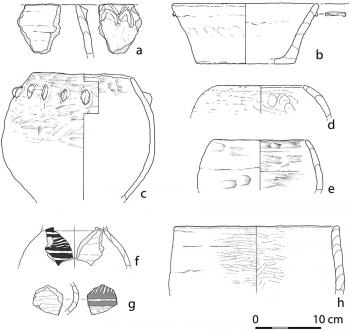American Journal of Archaeology | The Journal of the Archaeological Institute of America
You are here
Chronological Contexts of the Earliest Pottery Neolithic in the South Caucasus: Radiocarbon Dates for Göytepe and Hacı Elamxanlı Tepe, Azerbaijan
July 2015 (119.3)
Chronological Contexts of the Earliest Pottery Neolithic in the South Caucasus: Radiocarbon Dates for Göytepe and Hacı Elamxanlı Tepe, Azerbaijan
Research on the earliest Neolithic in the South Caucasus is still in its early stages. Establishing a solid chronological framework will help determine the timing of the emergence and subsequent development of regional Neolithic societies. This article reports on 46 radiocarbon dates obtained from the two recently excavated Early Pottery Neolithic sites of Göytepe and Hacı Elamxanlı Tepe, the oldest farming villages known to date in West Azerbaijan. Comparing the dates from other related sites demonstrates that several settlements representing the earliest Pottery Neolithic emerged almost simultaneously at the beginning of the sixth millennium B.C.E. in the northern and southern foothills of the Lesser Caucasus Mountains. The lack of evidence for plant cultivation or animal husbandry at earlier sites suggests a foreign origin for agricultural economies in the South Caucasus. However, cultural items characterizing the initial agropastoral communities were not brought to the region as a package. Instead, we suggest that these early farming communities—that is, the Shomutepe-Shulaveri—underwent gradual but significant autochthonous developments likely deriving from the aceramic stage. The chronological framework provided by Göytepe and Hacı Elamxanlı Tepe serves as a reference point for identifying details of early farmers’ cultural developments in the South Caucasus.
By Yoshihiro Nishiaki, Farhad Guliyev, and Seiji Kadowaki
American Journal of Archaeology Vol. 119, No. 3 (July 2015), pp. 279–294
DOI: 10.3764/aja.119.3.0279
© 2015 Archaeological Institute of America


